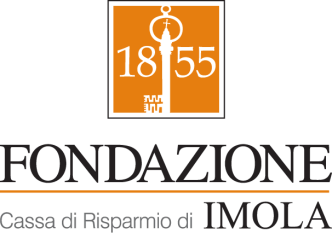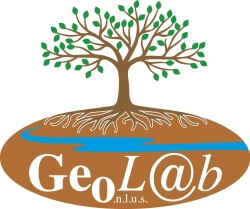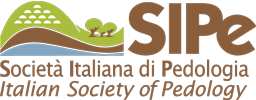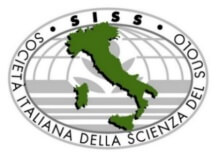GIS modeling of radioecological criticality in Ukrainian Polissia: a foundation for sustainable regional planning
DOI:
https://doi.org/10.6092/issn.2281-4485/21903Keywords:
GIS modeling, radioecological criticality, Ukrainian Polissia, sustainable land use, radioactive contamination, food security, land rehabilitationAbstract
The Russian military aggression has caused significant losses of Ukraine’s agricultural lands, posing threats to food security and sustainable regional development. In this context, Ukrainian Polissia emerges as a potential area to offset these losses. However, radioecological risks stemming from the Chornobyl disaster necessitate a scientifically grounded approach to land use. This article presents a GIS-based methodology for comprehensive radioecological-landscape zoning, utilizing the Radioecological Criticality Index (RECI). The RECI integrates natural factors (soil cover, topography, hydrography), anthropogenic factors (land use), and radioecological factors (137Cs contamination, radiation dose rates). Testing of the methodology near Rozsokhivske village (Zhytomyr Oblast) confirmed its effectiveness in identifying zones of varying criticality levels, which correlate with landscape characteristics. The methodology leverages open geospatial data (Copernicus, SRTM), striking a balance between accuracy and accessibility. Its adaptability enables the application of RECI to assess other types of contamination (chemical, organic) and in other regions, including post-conflict areas, within international programs such as UNEP and IAEA. This development supports sustainable regional planning, aligning with Sustainable Development Goals (SDGs 2, 13, 15) and the EU Soil Strategy 2030. It provides a tool for ecosystem restoration, optimization of agricultural land use, and evaluation of ecosystem services. Limitations include dependence on data quality and the need for periodic coefficient updates. The methodology serves as a versatile foundation for managing degraded territories, ensuring ecological safety and economic stability.
References
ALI M., SERAJ M., ALPER E., TÜRSOY T., UKTAMOV K.F. (2023) Russia-Ukraine war impacts on climate initiatives and sustainable development objectives in top European gas importers. Environmental Science Pollution Research, 30: 96701-96714. https://doi.org/10.1007/s11356-023-29308-9
ALIPBEKI O., KABZHANOVA G., KURMANOVA G., ALIPBEKOVA C. (2016) Application of GIS technologies to monitor secondary radioactive contamination in the Dele-gen mountain massif. IOP Conference Series: Earth and Environmental Science, 37: 012080. https://doi.org/ 10.1088/1755-1315/37/1/012080
APPIAH-OTOO I., CHEN X. (2023) Russian-Ukrainian war degrades the total environment. Letters in Spatial Resource Sciences, 16:32. https://doi.org/10.1007/s12076-023-00354-8
ATLAS UKRAINE (2014.) Radioactive contamination. Ministry of Emergencies of Ukraine, Intelligence Syste-GEO. Retrieved from https://radatlas.isgeo.com.ua/
AVILA R., KAUTSKY U., EKSTRÖM P.A., ÅSTRAND P.G., SAETRE P. (2013) Model of the long-term transport and accumulation of radionuclides in future landscapes. Ambio, 42(4):497-505. https://doi.org/10.1007/s13280-013-04 0 2-x
BERESFORD N.A., WRIGHT S.M., HOWARD B.J., CROUT N.M.J., ARKHIPOV A., VOIGT G. (2002) Aspects of the incorporation of spatial data into radioecological and restoration analysis. In: International Conference on Radiation Legacy of the 20th Century: Environmental Restoration (RADLEG 2000). IAEA, pp: 425-436. Retrieved from https://inis.iaea.org/records/5kxk3-v2d76
CHERNIAVSKYI A., LIUBASHENKO N., RAICHUK L., CHOBOTKO H., SHVYDENKO I., UMANSKYI M. (2023) Model of internal radiation dose formation for the population of Ukrainian Polissia in the remote period after the Chernobyl accident. Zenodo. https://doi.org/10.5281/zenodo.14367309
CHOBOTKO H.M., RAICHUK L.A. (2018) Identification of unknown parameters in biological systems modeling by the example of the forest ecosystem. Agroecological Journal, 1:14-20. https://doi.org/10.33730/2077-4893.1.2018.159238
HOBOTKO H., RAICHUK L., CHERNIAVSKYI A., LIUBASHENKO N., MC DONALD I. (2019b) Complex analysis and mathematical modeling of the internal exposure dose of the Ukrainian Polissya rural population. Nuclear Physics and Atomic Energy, 20(3):397-404. https://doi.org/10.15407/jnpae2019.04.397
CHOBOTKO H.M., RAICHUK L.A., SHVYDENKO I.K., KUCHMA M.D. (2020) Mathematical model of 137Cs migration in agricultural landscapes of Ukrainian Polissia in the remote period after the Chornobyl accident. Agroecological Journal (1):12-18. https://doi.org/10.33730/2077-4893.1.2020.201264
CHOBOTKO H.M., RAICHUK L.A., SHVYDENKO I.K., UMANSKYI M.S., KOMINAR M.F., LIABAKH S.V. (2022) Methodological recommendations for assessing the possibility of returning radioactively contaminated lands of Ukrainian Polissya to agricultural use. DIA, Kyiv.
CHOBOTKO H.M., KUCHMA M.D., RAICHUK L.A., SHVYDENKO I.K., UMANSKYI M.S. (2019a) Database of model data on radionuclide removal from agricultural landscapes of Polissia. Zenodo. https://doi.org/10.5281/zenodo.14366825
FREITAS M.W., SANTOS J.R. (2014) Zoneamento hierárquico da paisagem nos domínios da Bacia do Rio Uruguai. Sociedade and Natureza, 26:287-300. https://doi.org/: 10.1590/1982-451320140207
DAVYDCHUK V.S., SOROKINA L.YU., KALYNEKO L.V., HRYNIUK N.R. (1999) Application of the landscape approach to the justification of the rehabilitation of radioactively contaminated lands. In: Landscape as an Inte grating Concept of the 21st Century: Collection of Scientific Papers. Kyiv, pp: 205-208.
DREBOT O.I., DEMIANIUK O., RAICHUK L. (2022) Scientific and methodological principles of rehabilitation of radioactively contaminated agricultural landscapes in the context of the green economy. Bulletin of Agricultural Science, 100(2):74-81. https://doi.org/ 10.31073/agrovisnyk202202-10
DUBOIS G., TOLLEFSEN T., BOSSEW P., DE CORT M. (2004) GIS and radioecology: A data perspective. In: Proceedings of the 10th EC-GI & GIS Workshop, ESDI State of the Art. Warsaw, pp: 23-25.
EUROPEAN COMMISSION (2021) EU Soil Strategy for 2030: Reaping the benefits of healthy soils for people, food, nature and climate. Directorate-General for Environment, European Commission. Retrieved from https://environ ment.ec.europa.eu/publications/eu-soil-strategy-2030_en
GIRIY V., YASKOVETS I., KUTLAKHMEDOV YU., ZAITOV V., KUPRIYANCHUK A., ONISCHUK V., HILLE R., ROLLOFF F. (1999) Contribution of forest ecosystem to dose formation for inhabitants of the Ukrainian Polesye. In: Linkov I., Schell W.R. (Eds), Contaminated Fo-rests: Recent Developments in Risk Identification and Future Perspectives. Kluwer Academic Publishers, Dordrecht, pp: 325-332. https://doi.org/10.1007/978-94-011-4694-4_34
GRYTSYUK N., DAVYDCHUK V., ARAPIS G. (2006) Application of GIS technologies in ecotoxicology: A radioecological case study. In: Arapis G., Goncharova N., Baveye P. (Eds), Ecotoxicology, Ecological Risk Assessment and Multiple Stressors. NATO Security Through Science Series, Vol. 6. Springer, Dordrecht, pp. 269-278. https://doi.org/10.1007/1-4020-4476-3_18
HROMYK O.M. (2012) Radionuclide content in soils of Western Polissya (on the example of Manevychi and Liubeshiv administrative districts). Geography and Tourism, 18:301-308.
HROMYK O., ILYIN L., GRYGUS I., KOROTUN S., ILYINA O., ZUKOW W. (2020) Radiation monitoring of agricultural soils of the Volyn region in Ukraine. Roczniki Paristwowego Zakladu Higieny (Annals of the National Institute of Hygiene) 71(4):377-382. https://doi.org/10.32394/rpzh.2020.0139
IAEA (2000) Modelling the migration and accumulation of radionuclides in forest ecosystems: Final Report on Biomass Forest Working Group Activities 1998-2000. International Atomic Energy Agency, Vienna.
IAEA (2003) Testing of environmental transfer models using Chernobyl fallout data from the Iput River catchment area. Report of the Dose Reconstruction Group of BIOMASS, Theme 3. IAEA-BIOMASS-4. International Atomic Energy Agency, Vienna.
IAKYMENKO H.M., SHVYDENKO I.K., RAICHUK L.A., PANKOVSKA H.P. (2013) Determination of the level of radioactive contamination in potato tubers grown under conditions of the Ukrainian Polissya. Science Bulletin of the National Forestry University of Ukraine, 23(4):105-110. https://nv.nltu.edu.ua/Archive/2013/23_4/105_Jak.pdf
IG NASU, IS GEO LTD., WDC UKRAINE (n.d.) Territory pollution with Caesium-137 (Aftermath of the Chornobyl Accident, 1986). In: National Atlas of Ukraine. Retrieved from http://wdc.org.ua/atlas/en/7030100.html
IVANOV YU.O., KHOMUTININ YU.V. (2015) Mathe-matical modelling of dynamics of 90Sr and 137Cs migration in components of agrocenosises soil-plant cover at the late phase of radiation accident: I. Construction of the model and its parametrization. Nuclear Physics and Atomic Energy, 16 (2):169-176. https://doi.org/10.15407/jnpae2015.02.169
KONOPLEV A., KATO K., KALMYKOV S.N. (Eds). (2020) Behavior of Radionuclides in the Environment II: Chernobyl. 1st Edition. Springer, Singapore. : https://doi.org/10.1007/978-981-15-3568-0
KRASNOV V.P., ORLOV A.A., BUZUN V.A., LANDIN V.P., SHELEST Z.M. (2007) Applied Radioecology of Forests. Polissya, Zhytomyr.
KYRYLCHUK A., PALAMARCHUK R. (2022) Dynamics of 137Cs and 90Sr content in the soil cover of agricultural lands in Zhytomyr region. Agroecological Journal, 4:84-92. https://doi.org/10.33730/2077-4893.4.2022.273254
LABUNSKA I., LEVCHUK S., KASHPAROV V., HO-LIAKA D., YOSCHENKO L., SANTILLO D., JOHN-STON P. (2021) Current radiological situation in areas of Ukraine contaminated by the Chornobyl accident: Part 2. Strontium-90 transfer to culinary grains and forest woods from soils of Ivankiv district. Environment International, 146:106282. https://doi.org/10.1016/j.envint.2020.106282
LEV T.D., PRISTER B.S., VYNOHRADSKA V.D. (2016) Preventive integral estimates of agricultural areas radio-ecological criticality for effective management the processes of radiation accident consequences liquidation. Problems of Nuclear Power Plants’ Safety and of Chornobyl, 26:113-121. http://dspace.nbuv.gov.ua/handle/123456789/127774
LEV T.D., PRISTER B.S., VYNOHRADSKA V.D., TYSHCHENKO O.H., PISKUN V.N. (2018) Basin-landscape principle in assessing the degree of radioecological criticality of the territory of Ukraine. Ukrainian Geographical Journal, 4:49-58. https://doi.org/10.15407/ugz2018.04.049
LEV T.D., TALERKO M.M., PRISTER B.S. (2023) Com-prehensive assessment of the Chornobyl Exclusion Zone wildfires impact on the 100-km area around the Chornobyl NPP. Nuclear Energy and the Environment, (2):77-86. : https://doi.org/10.31717/2311-8253.23.2.8
LIKHTAROV I.A., KOVHAN L.M., VASYLENKO V.V. (2013) General dosimetry certification and results of HC monitoring in the settlements of Ukraine suffered from radioactive contamination after the Chornobyl accident: Generalized data of 2012. Ministry of Health Protection of Ukraine, Kyiv.
LINKOV I., CARINI F., COLLINS C., EGED K., MITCHELL N.G., MOURLON C., OULD-DADA Z., ROBLES B., SWEECK L., VENTER A. (2006) Radionuclides in fruit systems: Model–model intercompa-rison study. Science of the Total Environment, 364(1-3): 124-137. https://doi.org/10.1016/j.scitotenv.2005.08.002
LINKOV I., SCHELL W.R. (Eds). (1999) Contaminated Forests: Recent Developments in Risk Identification and Future Perspectives. 1st Edition. Springer, Dordrecht. https://doi.org/10.1007/978-94-011-4694-4
MATVIEIEVA I., GROZA V., PAVLIUKH L., RUDYAK Y., DARADKEH Y.I. (2019) Information model of ecological systems on the basis of reliability and radiocapacity with application of GIS technologies. In: Gnatyuk S., Fedushko S., Hu Zh., Odarchenko R., Syerov Yu., Peleshchyshyn A., Korobiichuk I. (Eds), Proceedings of the International Workshop on Cyber Hygiene (CybHyg-2019). Kyiv, pp: 593-603. Retrieved from https://ceur-ws.org/Vol-2654/paper44.pdf
MINISTRY OF ENVIRONMENTAL PROTECTION AND NATURAL RESOURCES OF UKRAINE (n.d.) EcoZagroza: Official resource. Retrieved from https://ecozagroza.gov.ua/en.
MUSYCH O.H., LANDIN V.P., RAICHUK L.A. (2019) Accumulation of 137Cs and 90Sr in plants as a result of the Chornobyl NPP technogenic disaster. Agroecological Journal, 1: 124-130. https://doi.org/:10.33730/2077-4893.1.2019.163297
NASA (n.d.) Shuttle Radar Topography Mission (SRTM). Retrieved from https://www2.jpl.nasa.gov/srtm/
OPENSTREETMAP (n.d.) OpenStreetMap. Retrieved from https://www.openstreetmap.org/
PARYENIUK O., RUBAN Y., NESTEROVA N., SHAVANOVA K. (2020) Influence of relief on the formation of dose load on Cryptomeria japonica as a result of the Fukushima-1 nuclear power plant accident. Scientific Bulletin of Lesya Ukrainka Eastern European National University: Series Biological Sciences, 2(390):45-49. https://doi.org/10.29038/2617-4723-2020-390-2-45-49
PAZINYCH N.V., FILIPOVYCH V.YE. (2014) Analysis of the impact of the relief on the surface redistribution of radio-nuclides territories affected by radioactive contamination (for example of exclusion of nuclear power plants Chornobyl and Fukushima-1 nuclear power plants). Ukraine Journal Remote Sensing, (3):40-43. https://ujrs.org.ua/ujrs/article/view/29
PRISTER B. (2008) Problems of Agricultural Radioecology and Radiobiology in the Context of Environmental Contamination with Fresh Mixtures of Nuclear Fission Products. Chornobyl.
PRISTER B. (2020) Behavior of the Chernobyl-derived radionuclides in agricultural ecosystems. In: Konoplev A., Kato K., Kalmykov S. (Eds), Behavior of Radionuclides in the Environment II. Springer, Singapore, pp. 229-282. https://doi.org/10.1007/978-981-15-3568-0_5
PRISTER B.S., BARBASHOV S.V., VYNOHRADSKA V.D., TYSHCHENKO O.H. (2013) Complex radioeco-logical zoning for purpose of improvement control, monitoring and emergency response on the areas of NPP influence. Problems Nuclear Power Plants’ Safety and of Chornobyl, (21):74-82. Retrieved from http://dspace.nbuv.gov.ua/handle/123456789/113456
PRISTER B.S., GARGER E.K., TALERKO M.M., VYNOHRADSKA V.D., LEV T.D. (2015) Radioecological zoning and territorial modeling for monitoring the agro-environment after a severe nuclear accident. Probl Nucl Power Plant Saf Chornobyl, (25):52-62. Retrieved from http://nbuv.gov.ua/UJRN/Pbaech_2015_25_9
PRISTER B.S., VINOGRADSKAYA V.D., LEV T.D., TALERKO M.M., GARGER E.K., ONISHI Y., TISCHENKO O.G. (2018) Preventive radioecological assessment of territory for optimization of monitoring and countermeasures after radiation accidents. Journal of Environmental Radioactivity, 184-185:140-151. https://doi.org/10.1016/j.jenvrad.2018.01.021
PROCHÁZKA J., ŠKRKAL J., RULÍK P., KŘOVÁKOVÁ K., ŠÍMOVÁ I. (2022) Determining the transfer factors for estimates of the radiation contamination of agricultural crops. Radiation Protection Dosimetry, 198(9-11):747-753. https://doi.org/10.1093/rpd/ncac129
RAICHUK L.A. (2012) The role of forest ecosystems in shaping radiation exposure doses to the population of Ukrainian Polissya. Candidate of Agricultural Sciences dissertation. National Academy of Agrarian Sciences of Ukraine, Institute of Agroecology and Environmental Management, Kyiv.
RAICHUK L., KUCHMA T., SHVYDENKO I., CHOBOTKO H., UMANSKYI M., BARANOVSKA N. (2025) Components of the comprehensive radioecological criticality index (RECI) for territories [Data set]. Zenodo. https://doi.org/10.5281/zenodo.15147892
RAICHUK L., SHVYDENKO I., CHOBOTKO H. (2019) Database of internal radiation doses for the population of certain settlements in the Zhytomyr region of Ukraine [Data set]. Zenodo. https://doi.orgh/10.5281/zenodo.14344014
RAICHUK L.A., SHVYDENKO I.K., CHOBOTKO H.M. (2024) Assessment of the impact of environmental and socio-economic factors on the formation of internal irradiation dose among the population of Ukrainian Polissia in the long-term period following the Chornobyl accident. In: Scientific Aspects of Conserving and Restoring Natural Resources under the Modern Development of Society: Scientific Monograph. Baltija Publishing, Riga, pp: 190-210. https://doi.org/10.30525/978-9934-26-511-2-9
RAICHUK L., DEMIANIUK O., KONISHCHUK V., HORODYSKA I. (2023) Socio-economic prerequisites for sustainable development of radioactively contaminated terri-tories in Ukrainian Polissia. Balanced Nature Management, 1: 66-73. https://doi.org/10.33730/2310-4678.1.2023.278541
ROMANTSCHUK L., USTYMENKO V., DIDENKO P. (2021) Accumulation and distribution of 137Cs and 90Sr radionuclides in the forests of the «Drevlyansky» Nature Reserve. International Journal Ecotoxicology Ecobiology, 6(2):29-33. https://doi.org/0.11648/j.ijee.20210602.11
ROZPUTNYI O.I., PERTSEVYI I.V., SKYBA V.V., HE-RASYMENKO V. (2016) Radioecological situation in hou- sehold plots in the southern part of Kyiv region in the long-term period after the Chornobyl disaster. Bulletin of Zhyto-myr National Agroecological University, (1)55(3):101-109.
SALT C.A., DUNSMORE M.C. (2000) Development of a spatial decision support system for post-emergency manage-ment of radioactively contaminated land. Journal Environ-mental Management, 58(3):169-178. https://doi.org/ 10.1006/jema.2000.0324
SHEVCHENKO O.L., BUBLIAS V.M. (2013) The role of depression microrelief and other factors in the formation of waterborne export of radioactive strontium. Collection of Scientific Works of the Ukrainian State Geological Ressearch Institute, 3:84-97.
SHEVCHENKO O.L., AKINFIEV H.O. (2020) Generalization of factors contributing to the involvement of radionuclides in water migration. Geochemistry of Technogenesis, 31:41-52.
STATE SERVICE OF UKRAINE FOR GEODESY, CARTORAPHY AND CADASTRE (n.d.) Public Cadastral Map of Ukraine. Retrieved from https://map.land.gov.ua/
TARARIKO O.H., CRUSE R.M., ILIENKO T.V., KUCH-MA T.L., KOZLOVA A.O., ANDEREIEV A.A., YAT-SIUK V.M., VELYCHKO V.A. (2024) Impact of climate changes on agroresources of Ukrainian Polissia based on geospatial data. Agricultural Science and Practice, 11(2): :3-29. https://doi.org/10.15407/agrisp11.02.003
TITOVA S.V. (2002) Cartographic support for radioeco-logical monitoring (Case study of the Chernobyl NPP accident zone). PhD dissertation in Geographical Sciences: Specialty 11.00.12 - Geographical Cartography. Institute of Geography, National Academy of Sciences of Ukraine, Kyiv.
TKACHUK V.P., KOVALOV V.B. (2018) Influence of mechanical tillage and fertilization on the migration of radiocaesium in the arable layer of sod-podzolic soil. Agro-Industrial Production of Polissia, 11:110-113.
TSARYK L., KUZYK I. (2022) Russian-Ukrainian War: Environmental aspect. Scientific Notes of Ternopil National Volodymyr Hnatyuk Pedagogical University: Series Constructive Geography and Geoecology, 53:100-106.
TUCHKOVENKO Y.S., STEPANENKO S. (2023) The impact of destruction of the Kakhovka dam on the environmental status of the Odesa area of the Black Sea. Problems of Water Supply, Sewerage and Hydraulics, 44: 71-80. https://doi.org/10.32347/2524-0021.2023.44.71-80
TYSHCHENKO O.G., LANDIN V.P., TSYDYK N.M., MARTYNENKO V.V. (2023) Assessment of the radioecological situation for the territory of the Drevlians Nature Reserve as of 2023. Nuclear Power and the Environment, 1(26):55-63. https://doi:org/10.31717/2311-8253.23.1.6
VITO (2015) The Copernicus Global Land Service – CGLS. Retrieved from https://lcviewer.vito.be/2015
VYNOHRADSKA V.D. (2014) Prediction of ¹³⁷Cs con-tamination in agricultural products using a radionuclide behavior model in the “soil–plant” system. Bulletinof Zhytomyr Nationsl Agroecological University, 2(1):13-20.
ZANAGA D., VAN DE KERCHOVE R., DAEMS D., DE KEERSMAECKER W., BROCKMANN C., KIR-CHES G., WEVERS J., CARTUS O., SANTORO M., FRITZ S., LESIV M., HEROLD M., TSENDBAZAR N.E., XU P., RAMOINO F., ARINO O. (2022) ESA WorldCover 10 m 2021 v200. Retrieved from https://esa-worldcover.org
Downloads
Published
How to Cite
Issue
Section
License
Copyright (c) 2025 Liudmyla Raichuk, Tetiana Kuchma, Iryna Shvydenko, Hryhorii Chobotko, Iryna McDonald

This work is licensed under a Creative Commons Attribution 4.0 International License.









